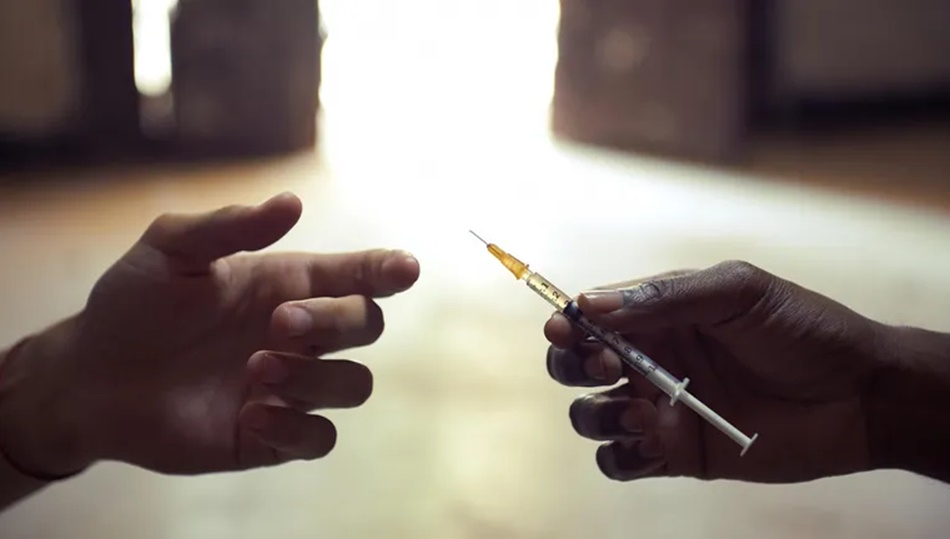Drug Addiction: How those Affected Change
Drug addiction is not only a major psychological burden for those affected.

The relatives also support the addiction and experience how a close person suddenly develops new traits and distances themselves increasingly.
Addiction can be a heavy burden for family, partners and friends. In addition to worrying about the health of the loved one, the personality changes of an addict can also put a heavy strain on being together. How the consumption of drugs changes the behavior, thinking and feelings of those affected and where drug addicts and their families can find help.
Drug addiction leads to loss of control
“The direct effect is caused by the substances themselves. Depending on the type of drug, it can have a euphoric, stimulating or calming effect. Moods such as depression or irritability can be intensified under the influence of alcohol, for example,” says Christian Muhl, director of the salus clinic in Friedberg , a drug addiction rehabilitation facility. “The indirect effect can be attributed to the addictive behavior. The person concerned increasingly loses control over the consumption. His thoughts and behavior are increasingly geared towards obtaining the addictive substance and consumption.”
How drugs change people
Drugs cause the reward center in the brain to release more dopamine and serotonin and increasingly change nerve cell connections. Perceptions, thinking and feelings change. The expectation of positive effects and increasing habituation to the addictive substance creates an ever greater desire for the drug, which can become life-determining. The body and psyche also react with stress if the substance is missing. The strong craving for the drugs, the mind-altering effects of the substances, and the withdrawal symptoms affect the behavior and personality of the drug addict.
In addition to extreme mood swings such as euphoria, depression, anger and fear, there is usually increasing distance, coldness, unreliability, absence and a lack of interest in family and friends. “Social withdrawal is usually the behavior that people close to you notice first,” says Muhl.
There are various reasons for the increasing distancing. On the one hand, the focus is increasingly on the addictive substance and dealing with it is taking up more and more time. On the other hand, those affected are often afraid of rejection and do not want to disappoint their social environment. “Sometimes they also shy away from legal consequences, for example if they fear losing contact with their children or their job if they are discovered. Many therefore try to maintain a ‘double life’ until at some point it is no longer possible,” explains Muhl.
Quarrels, conflicts and irritability
Withdrawal is the basis for arguments, conflicts, tensions in the social environment, and sometimes violence, as is the disclosure of the addiction and attempts to help. Children of addicted parents are particularly at the mercy of the damaging influences.
“While those around them are concerned and might want to help, the person concerned increasingly loses interest in those around him. He is less and less able to fulfill his duties, hobbies are neglected, school and work suffer or get through it as hoped,” says Muhl. “That leads to tension, defense and resistance on both sides – and often ends in resignation and even more withdrawal.”
How do you recognize a drug addiction?
Doctors name six typical criteria for drug addiction. If three of the drug addiction symptoms occur at the same time, drug addiction is present:
Indomitable desire to take and obtain the intoxicant (craving)
Inability to give up the drug (psychological and usually also physical dependence). Uncontrollable timing, duration and amount of consumption (loss of control)
Tendency to increase dose (development of tolerance)
psychological and physical withdrawal symptoms when the drugs are discontinued
Continuing drug use despite negative consequences for self and others
Neglect of interests and obligations. Procurement and consumption are increasingly becoming the focus of life.
Suicide and violence: the dangers of drugs for oneself and others
Some drugs can also trigger psychoses, such as LSD, which has a hallucinogenic effect, or “magic mushrooms”. During so-called “horror trips”, which can last for several days, those affected feel fear, panic and strong excitement and have a delusional altered perception. In extreme cases, such a psychosis can end in suicide (suicide) or in the injury of other people. The mood swings caused by drugs, the altered perception of emotions and the often disinhibiting effect of drugs can lead to outbreaks of physical and sexual violence. If the money is no longer enough, addicts may commit crimes or prostitute themselves to finance the addiction.
Where victims and their relatives can find help
Those affected by drug addiction often do not find their way out of the addiction on their own. The compulsive desire for certain intoxicants is too strong. Professional support is advisable in any case. “A drug counseling center can be the first point of contact for people addicted to drugs and their families,” says Muhl. “In addition to initial support, they receive support there in looking for offers of help. Contacts to self-help groups can also be established through the counseling centers.” An online search for addiction counseling centers in the vicinity, for example, offers the German Central Office for Addiction Questions (DHS).
Treating drug addiction: three pillars of treatment
The will of the person concerned to overcome the addiction is the most important prerequisite for the beginning and the success of drug therapy. Counseling sessions and therapeutic individual and group sessions can help to increase motivation for therapy. Drug addiction treatment has three goals:
Detox Phase: The detox phase is part of physical drug withdrawal. Withdrawal symptoms peak up to 48 hours after the last drug dose. Both acute detoxification and further withdrawal pose a health risk and are therefore usually carried out on an inpatient basis. The withdrawal lasts between two to four weeks. In “cold” turkey, the addictive substances are stopped abruptly. In “warm” turkey, medication relieves the withdrawal symptoms. It is also possible to administer a “substitute drug”. Doctors speak of substitution therapy. For example, heroin addicts usually get methadone. It doesn’t produce any intoxication, but relieves the withdrawal symptoms. The methadone dose is gradually reduced as part of the detoxification process.
Weaning: After detoxification comes weaning. This is about overcoming the psychological dependency. Weaning usually takes up to six months – sometimes longer – and often takes place as part of rehabilitation in a special clinic.
Stabilization: Successful weaning is followed by the stabilization phase. The aim is to prevent relapses and to support further abstinence.
A therapist in private practice or an outpatient addiction aftercare center accompany the stabilization. Self-help groups also offer many of those affected valuable support and exchange.


